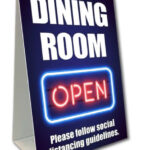Gulow Street in Cincinnati might be one of the city’s smallest streets, stretching barely two blocks in Northside from Hoffner Street to Vandalia Avenue. Yet, this unassuming street is steeped in Germanic history, named after August Ernst Gulow (1835-1901), a relative of the author. Recently, the author acquired a Gulow Street ball cap, a testament to the area’s local pride and intriguing past. The story of Gulow Street is a fascinating journey into Cincinnati’s German immigrant heritage and the enduring legacy of a community.
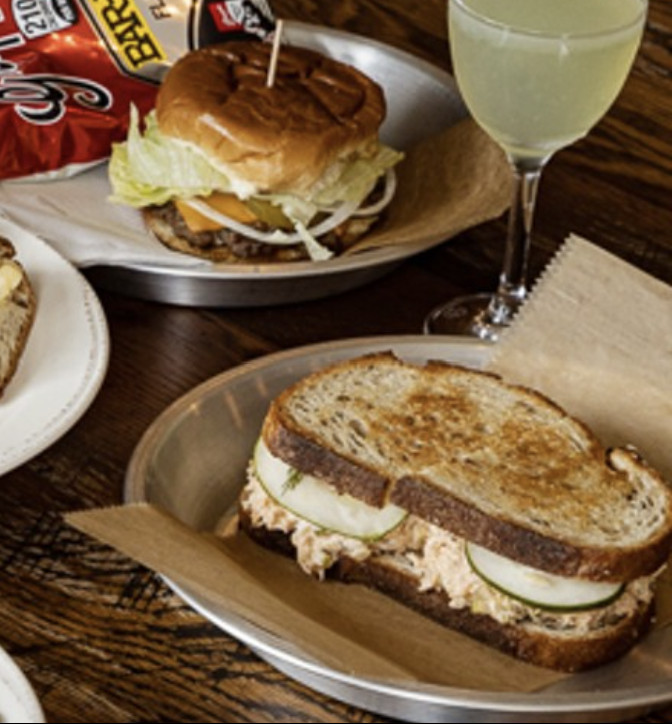 Delicious Salmon Salad at Gulow Street Restaurant in Cincinnati – A culinary homage to German traditions.
Delicious Salmon Salad at Gulow Street Restaurant in Cincinnati – A culinary homage to German traditions.
August Ernst Gulow, the street’s namesake, was born in Penzlin, a town in northern Germany, about an hour north of Berlin. He was a cousin of Theodore Ernst Woellert (1829-1909), the author’s great-great-grandfather. Both Gulow and Woellert grew up together in Penzlin, sharing roots in the Germanic region of Mecklenburg-Schwerin.
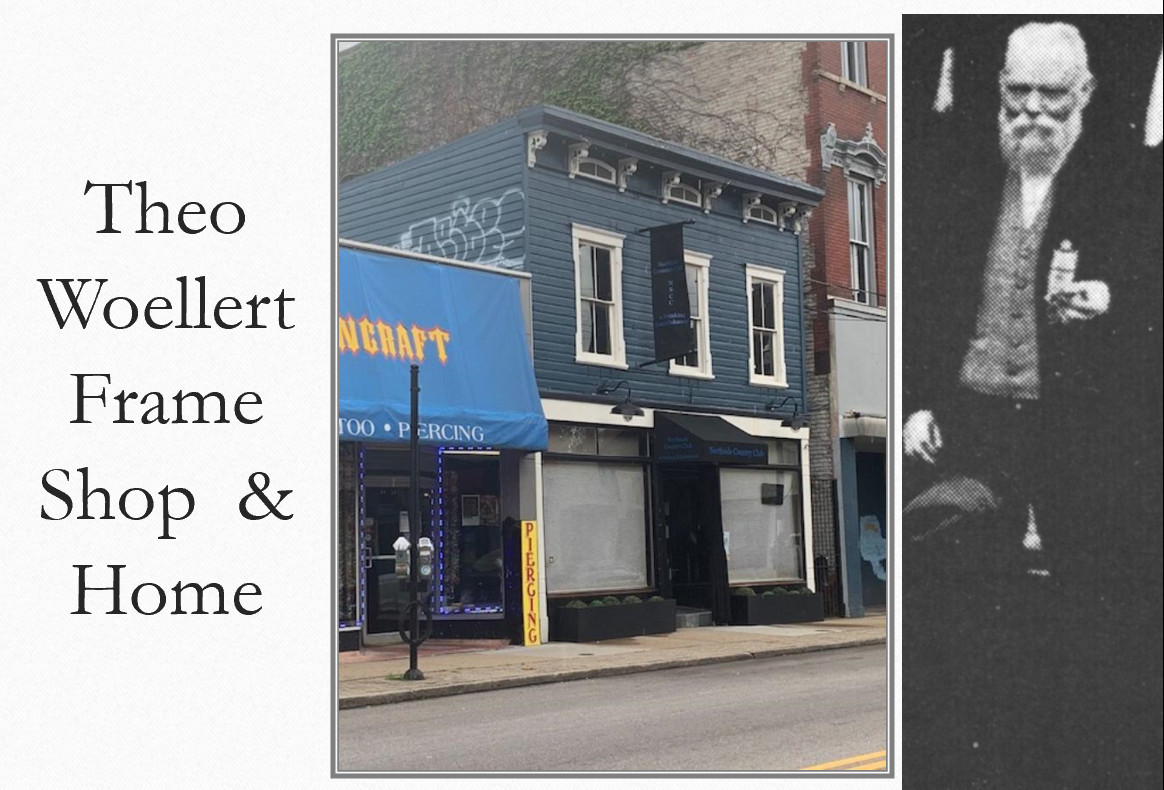 Gulow Street Ball Cap – Showcasing local pride for Cincinnati's historic Gulow Street.
Gulow Street Ball Cap – Showcasing local pride for Cincinnati's historic Gulow Street.
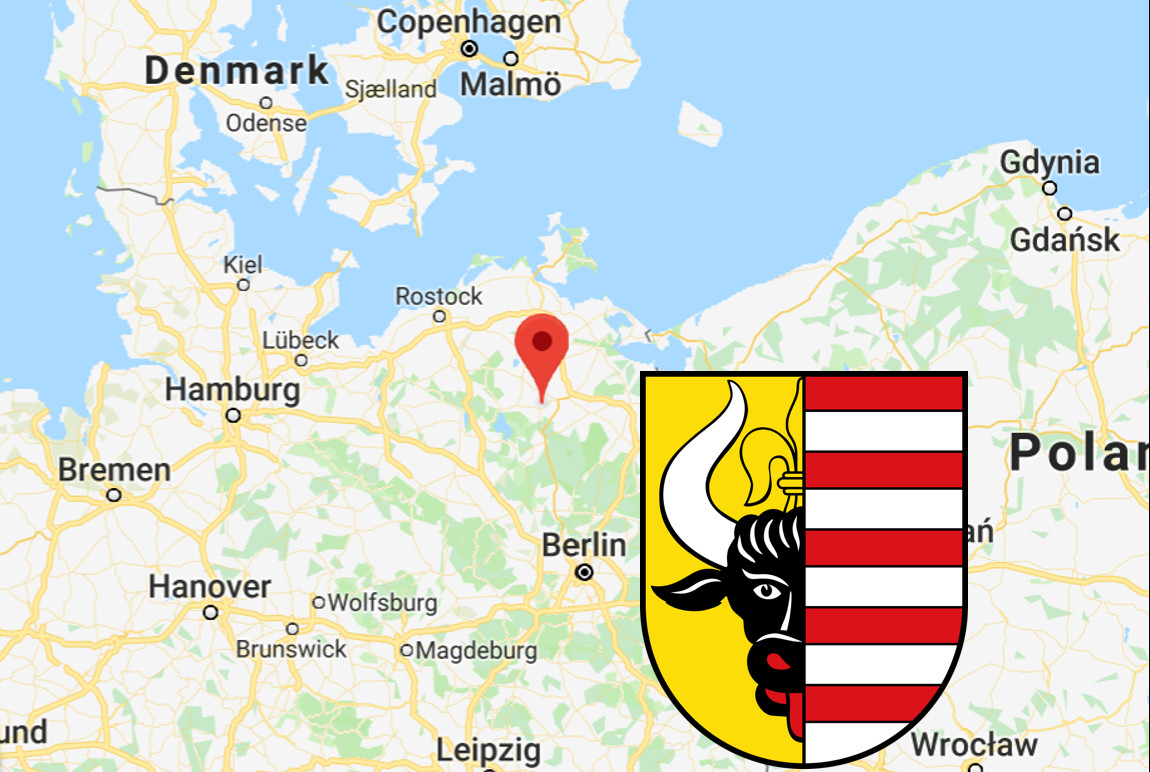 Map of Gulow Street Cincinnati – A short but historically significant street in Northside.
Map of Gulow Street Cincinnati – A short but historically significant street in Northside.
In 1855, Theodore Woellert, accompanied by his cousin Carl Dankert and their fiancées, sisters Freda and Therese Burchard, immigrated to Cincinnati. They married in a double wedding shortly after arriving and initially resided in a tenement house on Liberty Street in Over-the-Rhine, a neighborhood known for its German immigrant population.
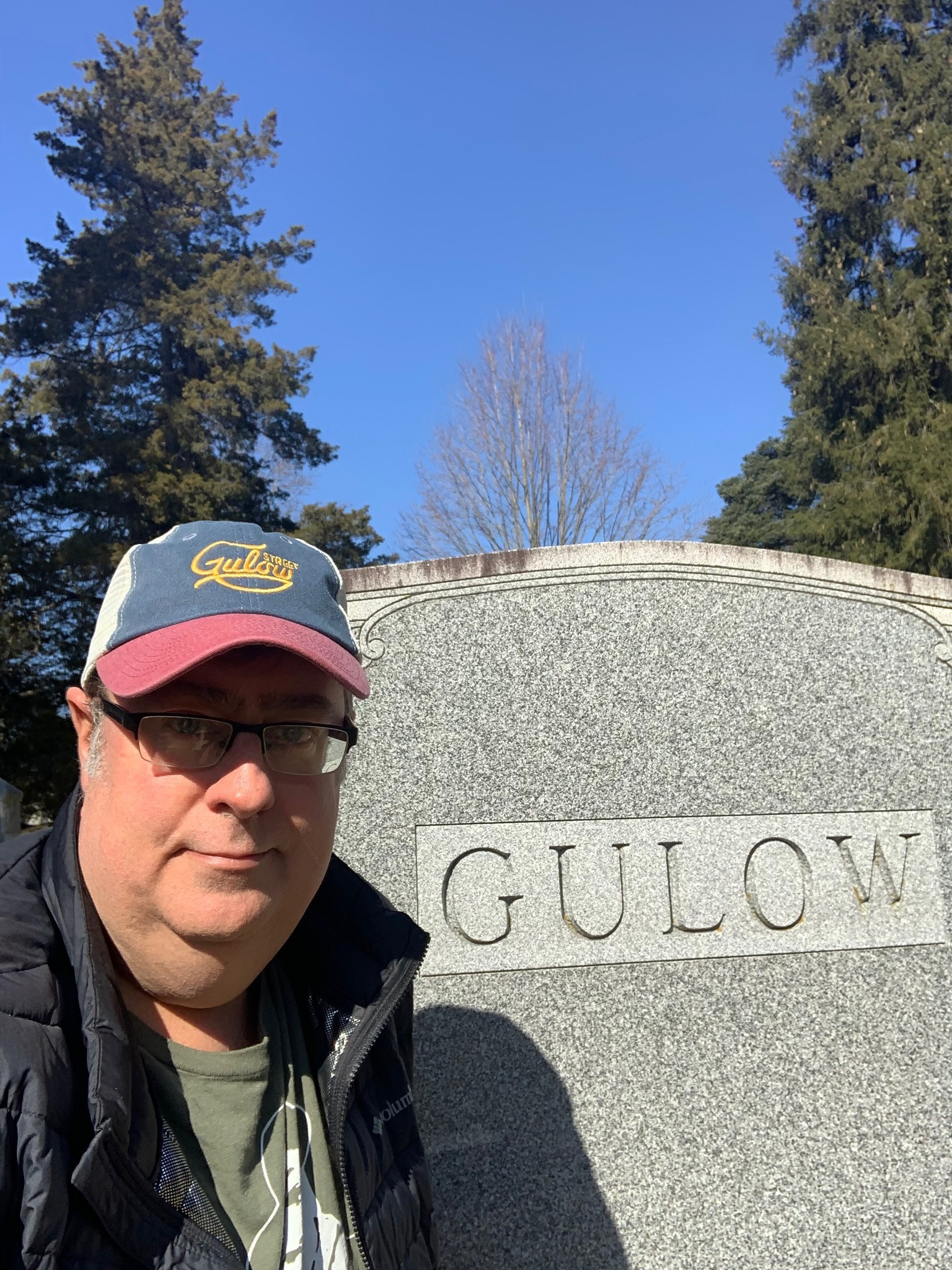 Restored Corner Building on Gulow Street Cincinnati – A historic landmark from the time of August Gulow.
Restored Corner Building on Gulow Street Cincinnati – A historic landmark from the time of August Gulow.
The corner building on Gulow Street, now lovingly restored, stood during the time August Gulow and his fellow Penzlin natives were establishing themselves in Cincinnati. This historic structure serves as a tangible link to the past and the enduring presence of German heritage in the area.
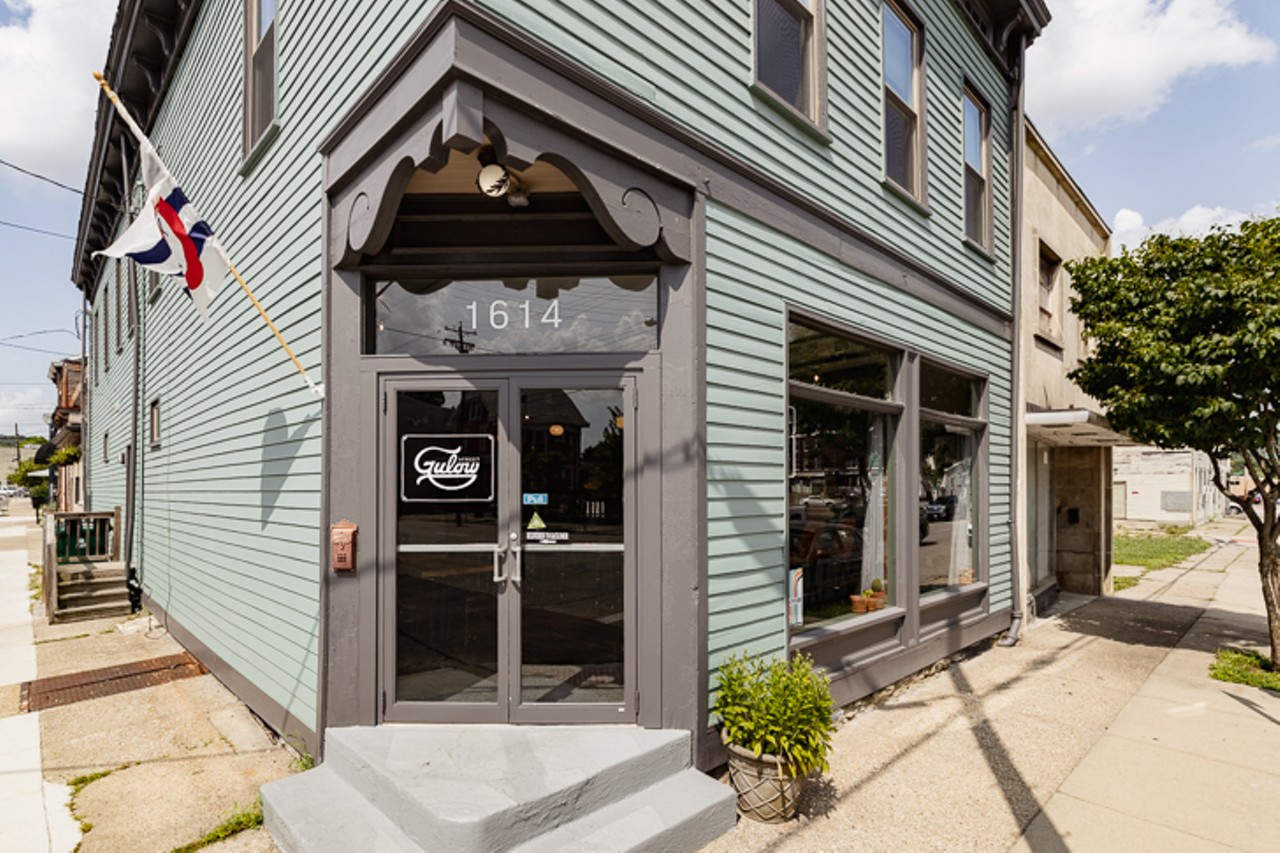 Gulow Street Restaurant Sign – Welcoming diners to experience Cincinnati's Northside.
Gulow Street Restaurant Sign – Welcoming diners to experience Cincinnati's Northside.
The Gulow Family History
Born in Penzlin in 1835, August Ernst Gulow was baptized at the Marienkirche in Penzlin. His parents, Christian Daniel Carl Gulow and Sophie Elizabeth Friederica Schier, raised a family where, despite their father’s profession as a master blacksmith, both sons, August and Wilhelm, became tailors. August also became a men’s hat maker. August’s sisters, Henriette, Dora, and Marie, later joined him in Cincinnati, immigrating with their mother in 1865 after their father’s passing.
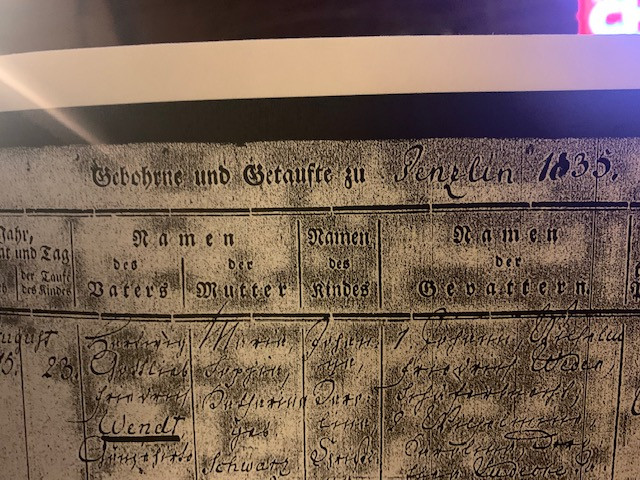 August Ernst Gulow Birth Record – Historical document from Marienkirche Church in Penzlin, Germany.
August Ernst Gulow Birth Record – Historical document from Marienkirche Church in Penzlin, Germany.
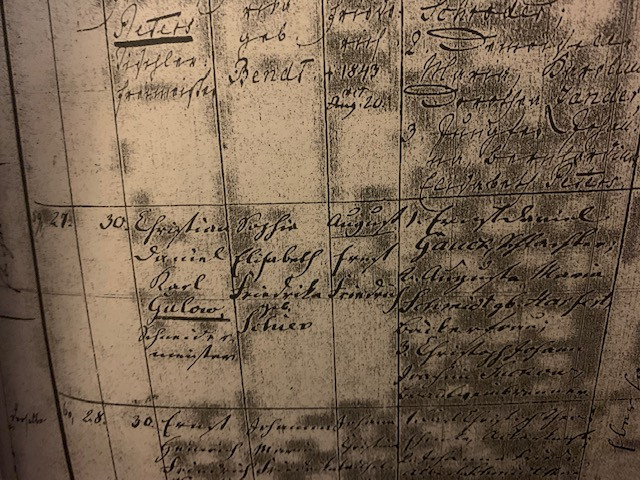 Marienkirche Church in Penzlin Germany – Where August Ernst Gulow was baptized in 1835.
Marienkirche Church in Penzlin Germany – Where August Ernst Gulow was baptized in 1835.
August Gulow immigrated to Cincinnati in 1857, following the Woellert family. He and his brother Wilhelm, both tailors and hat makers, initially took different paths. Wilhelm settled in Cincinnati’s West End, a heavily German area, and became involved in the West End Turner society. August, however, joined the Woellerts, Dankerts, and other families from Penzlin in Cumminsville. They clustered around Knowlton’s Corner, the intersection of Ludlow, Hamilton, and Hoffner Avenues, creating a strong Penzlin enclave.
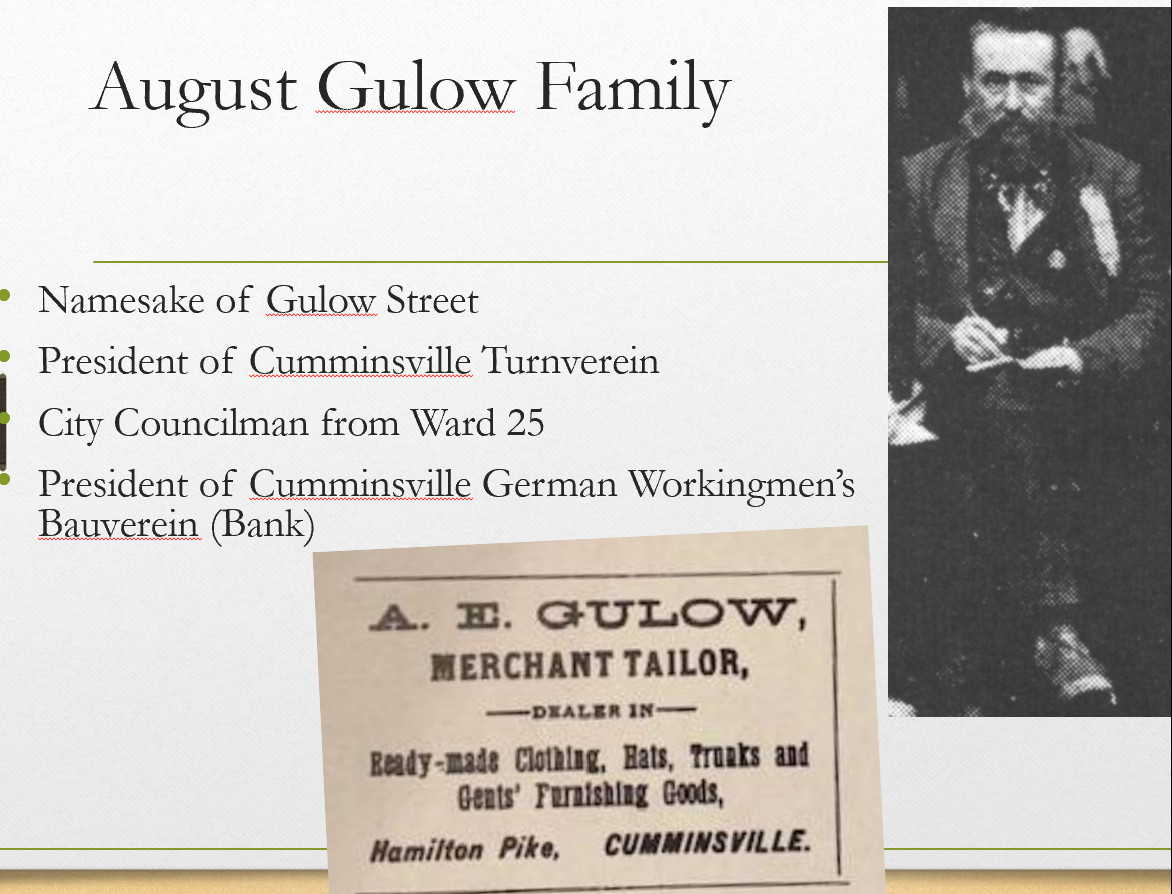 Map of Penzlin Germany and Mecklenburg-Schwerin – Ancestral home of Gulow family and Cincinnati immigrants.
Map of Penzlin Germany and Mecklenburg-Schwerin – Ancestral home of Gulow family and Cincinnati immigrants.
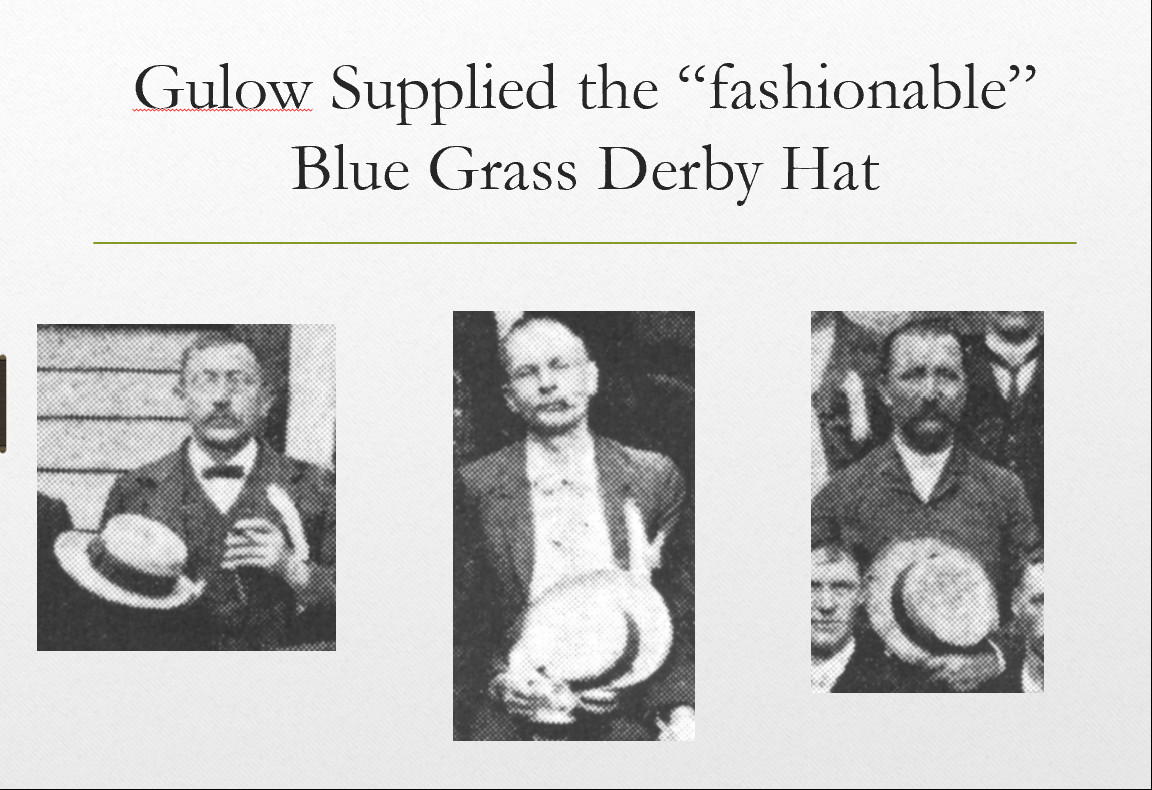 Vandalia Avenue Cincinnati – Formerly Duchy of Mecklenburg-Schwerin, connecting to German heritage.
Vandalia Avenue Cincinnati – Formerly Duchy of Mecklenburg-Schwerin, connecting to German heritage.
Little Mecklenburg in Cumminsville
Vandalia Avenue’s name itself echoes the region of Mecklenburg-Schwerin, where Penzlin is located. The concentration of families from Penzlin in Cumminsville led to the area being affectionately known as “Little Mecklenburg,” highlighting the strong chain migration from this specific region of Germany.
Gulow Street’s original name was Oak Street, but in 1870, it was renamed to honor August Gulow. This renaming recognized August’s significant contributions to the community. He served multiple terms as a councilman for the 25th ward, ran a successful notions and tailor shop on Hamilton Avenue, was a member of the Cumminsville School Board, and held the position of President of the Cumminsville Turners. The Turners were a German-American sport and social club known for their vibrant community events, including elaborate Christmas parties at their Turner Hall.
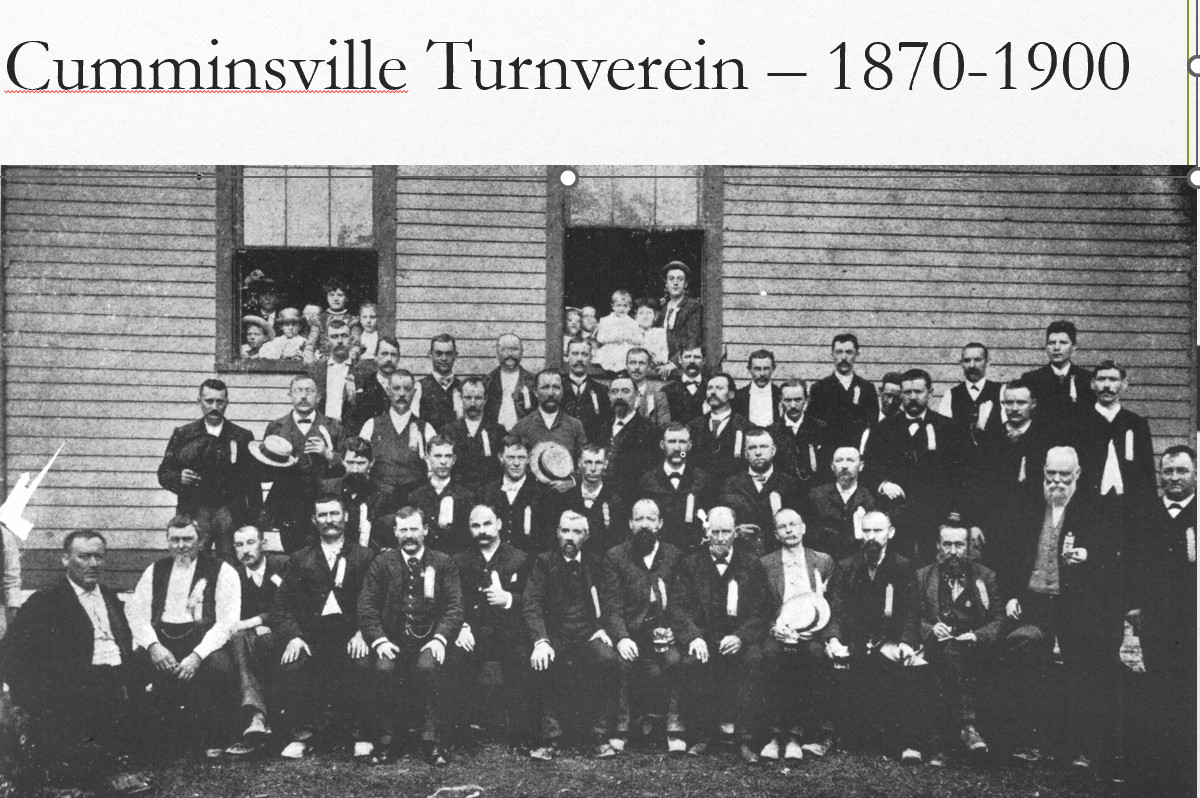 1873 Cumminsville Turners Group Photo – Celebrating German heritage and community in Cincinnati.
1873 Cumminsville Turners Group Photo – Celebrating German heritage and community in Cincinnati.
A surviving group photo from the 1870s captures members of this Penzlin immigrant group, showcasing their participation in the 1873 Turnfest, a large gymnastics festival hosted by Cincinnati Turner societies at Parker’s Grove, now Coney Island.
The Penzlin community was tightly knit, embodying the saying “it takes a village.” They frequently acted as godparents for each other’s children, strengthening their community bonds. For instance, August Gulow was godfather to Theodore and Freda Woellert’s daughter, Therese August Christine Woellert, in 1864. Similarly, Carl Dankert was godfather to August Ernst Gulow’s son, August Robert, in 1861. Theodore Woellert further demonstrated this community support by taking in his orphaned niece, Anna Dankert.
A Cincinnati Evening Post excerpt from 1885 described August Gulow’s established presence in Cumminsville:
August E. Gulow is one of the earliest residents of Cumminsville. His little story and a half tailor shop on Hamilton Pike near the post office, was one of the landmarks of Cumminsville, when it was yet a village, before it became Ward 25 of a great city. Mr Gulow is now a councilman from that ward, and having prosperous business, is building a new store and residence adjoining the old one.
In 1870, Gulow’s former tailor shop became the location of the Cumminsville telegraph office, turning it into a central gathering spot and community hub.
Culinary Echoes: From German Pickled Herring to Cincinnati Salmon Salad
The modern-day restaurant “Gulow Street” in Northside provides a culinary homage to the German heritage of the area. The restaurant’s salmon salad on rye sandwich is reminiscent of the pickled herring, or matjes, that was a staple in Penzlin and a tradition that continued through generations in Cincinnati German-American families. Pickled herring, often served in cream, brown, or lingonberry cream sauces, was a customary dish at Woellert family Christmas parties. This tradition, rooted in the belief that eating pickled herring around the new year brought good luck, is echoed in the restaurant’s contemporary menu. The salmon salad also pays tribute to souljanka, a Northern German fish stew similar to cioppino or bouillabaisse, further connecting the restaurant’s offerings to the culinary traditions of Penzlin.
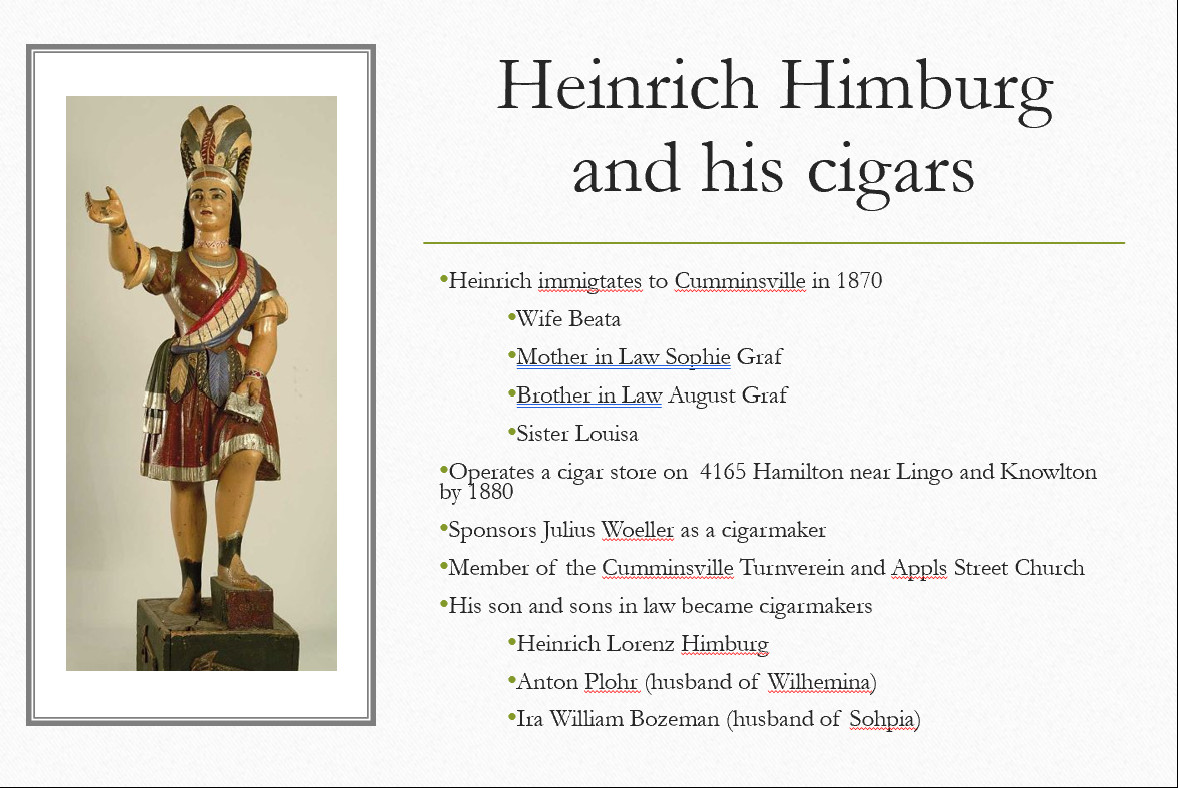 Bruckmann Beer Mugs – A symbol of German brewing tradition in Cincinnati.
Bruckmann Beer Mugs – A symbol of German brewing tradition in Cincinnati.
While Southern Germans are often associated with beer, Northern Germans, like those from Penzlin, historically favored stronger liquors, such as regional brandies and fruit schnapps. One unique spirit from the region is brandy made from sea buckthorn berries, a cranberry-like fruit common in Northern Germany. This brandy was often used to enhance Eierlikör, the North German version of eggnog. The author’s grandfather continued the eggnog tradition at family Christmas parties, initially making his own spiked with bourbon, and later relying on Cincinnati’s local United Dairy Farmers (UDF) eggnog as a substitute.
Despite their preference for liquor, the Penzliners in Cincinnati did enjoy beer, particularly Bruckmann Beer. Johann Caspar Bruckmann, the founder of Bruckmann Brewery, was a friend and fellow community member. He was involved in the Cumminsville Turners and their German Lutheran Church on Apple Street (later Hoffner Street). The original Apple Street Church still stands, though a later, larger church was destroyed by a tornado. The congregation then moved to College Hill. The Cumminsville Turners’ 1873 group photo notably shows members with mugs of dark Bruckmann Beer, possibly their bock beer.
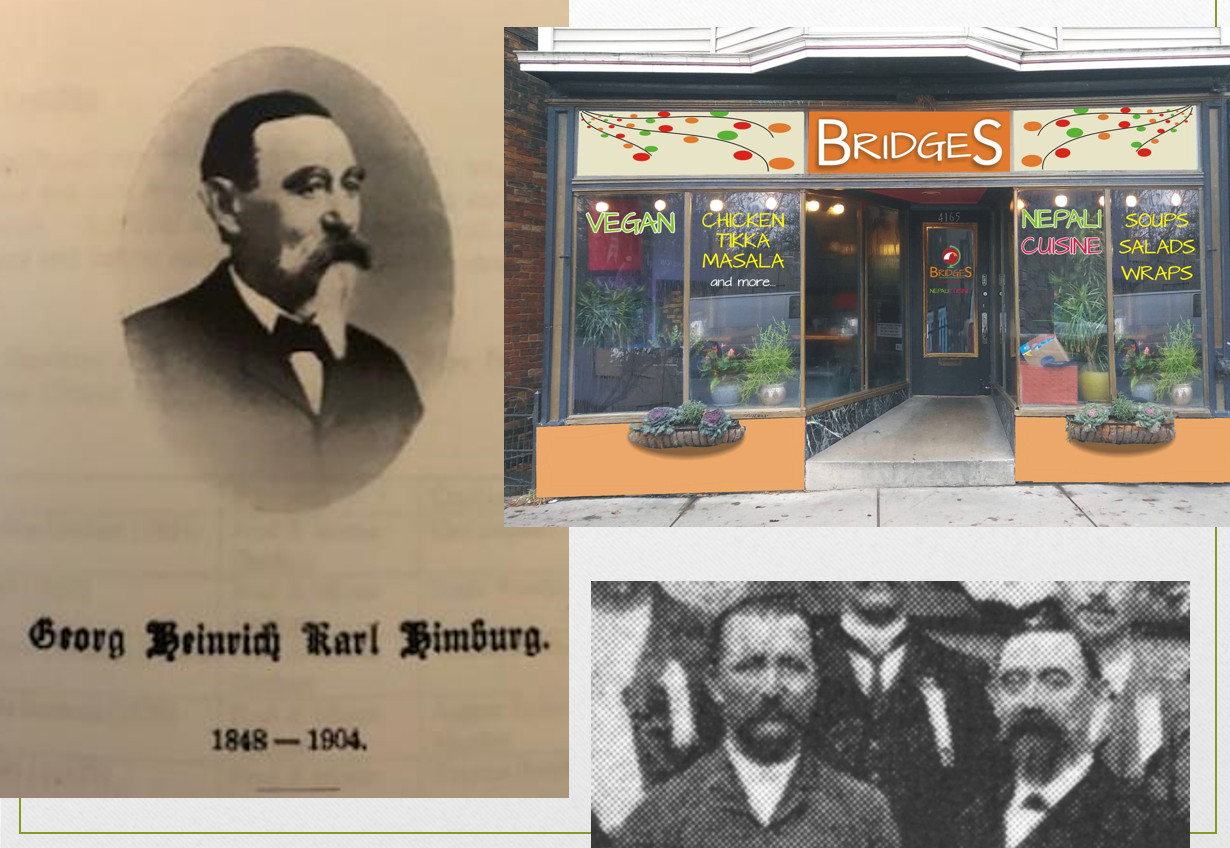 Himburg Cigar Factory Location – Now Bridges Nepali Cuisine, formerly Melt in Cincinnati Northside.
Himburg Cigar Factory Location – Now Bridges Nepali Cuisine, formerly Melt in Cincinnati Northside.
The photo also features Heinrich Himburg, another Penzlin immigrant, and his son. Himburg was a local cigar maker whose factory was located on the property now occupied by Bridges Nepali Cuisine, previously Melt, in Northside. Theodore Woellert is pictured in the group portrait holding what is presumed to be a Himburg cigar.
Challenges and Triumphs
The story of the Gulow and Penzlin immigrants is one of resilience and adaptation, but it also acknowledges hardships. High child mortality rates were prevalent, and dementia was a recurring health issue within these families, potentially linked to mercury use in hat making, a trade practiced by the Gulows. Late in life, August Gulow experienced dementia and was cared for by his family to avoid institutionalization at facilities like Longview Asylum.
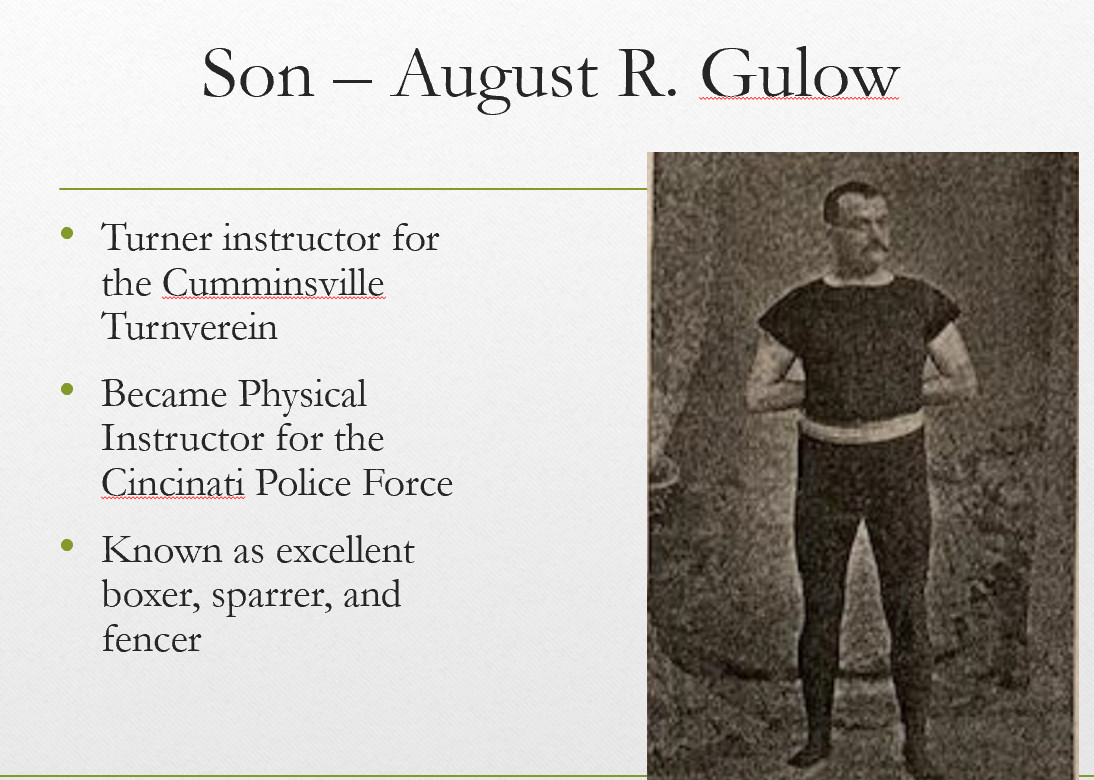 August Robert Gulow – Son of August Ernst Gulow, Cincinnati Police Force instructor and community figure.
August Robert Gulow – Son of August Ernst Gulow, Cincinnati Police Force instructor and community figure.
August’s son, August Robert Gulow, also became a prominent figure in the Northside/Cumminsville community. He was a founding member of the Cumminsville Turners in his youth and later became the first physical instructor for the Cincinnati Police Force, as well as a skilled boxer.
Gulow Street, though small, represents a significant chapter in Cincinnati’s history. It embodies the story of German immigration, community building, and the enduring legacy of families like the Gulows and Woellerts who shaped the city’s cultural landscape. Exploring Gulow Street and its surroundings offers a glimpse into Cincinnati’s rich past and the vibrant Northside neighborhood that continues to honor its heritage.

